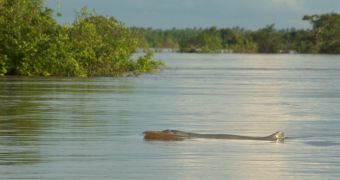Biologists have a new reason to believe that biodiversity is far from being a closed chapter. They have discovered 208 new species in various ecosystems in the forests, waters and wetlands of the Greater Mekong region.
Experts managed to identify 145 plants, 28 reptiles, 25 fish, 7 amphibians, 2 mammals and 1 bird only in 2010. They are now dealing with a new kind of monkey and five carnivorous plants, WWF informs.
To their surprise, the team of researchers has realized that the region sheltering some of the most vulnerable wildlife representatives, like the Asian elephant Mekong dolphin and Mekong giant catfish, is also the home of other recently discovered creatures that are currently under the spotlight.
Scientists are planning to further exploit the area, since they are convinced it hides other rare plants and animals that still remain unknown.
It is obvious that the Greater Mekong hides many secrets. From 1997 to 2009, experts succeeded in identifying no less than 1,376 species only in this region.
Moreover, although the region has a lot of potential and researchers hope to expand their research, it appears that the area displays a fragile balance.
A relevant example is the wild tiger population that has experienced a decline of up to 70% in ten years, but perhaps the most alarming fact suggesting that environmental preservation has to rank first in a list of governmental priorities is the extinction of the Javan rhino in Vietnam, recorded in 2010.
Human intervention, visible through deforestation, unsustainable agricultural practices and habitat destruction, join forces with the effects of climate change, thus affecting biodiversity in the region.
Nevertheless, these risk factors also put the balance of local communities in danger, since 300 million people depend on water, energy, food offered by this amazing ecosystem.
Experts have recently revealed that The Greater Mekong represents one of five most exposed “biodiversity hotsports” all across the globe.
WWF experts warn that countries can't tackle this important issue on their own, since a stronger regional collaboration appears to be the only viable path to fight the emerging threats and preserve the balance of the Greater Mekong.

 14 DAY TRIAL //
14 DAY TRIAL //